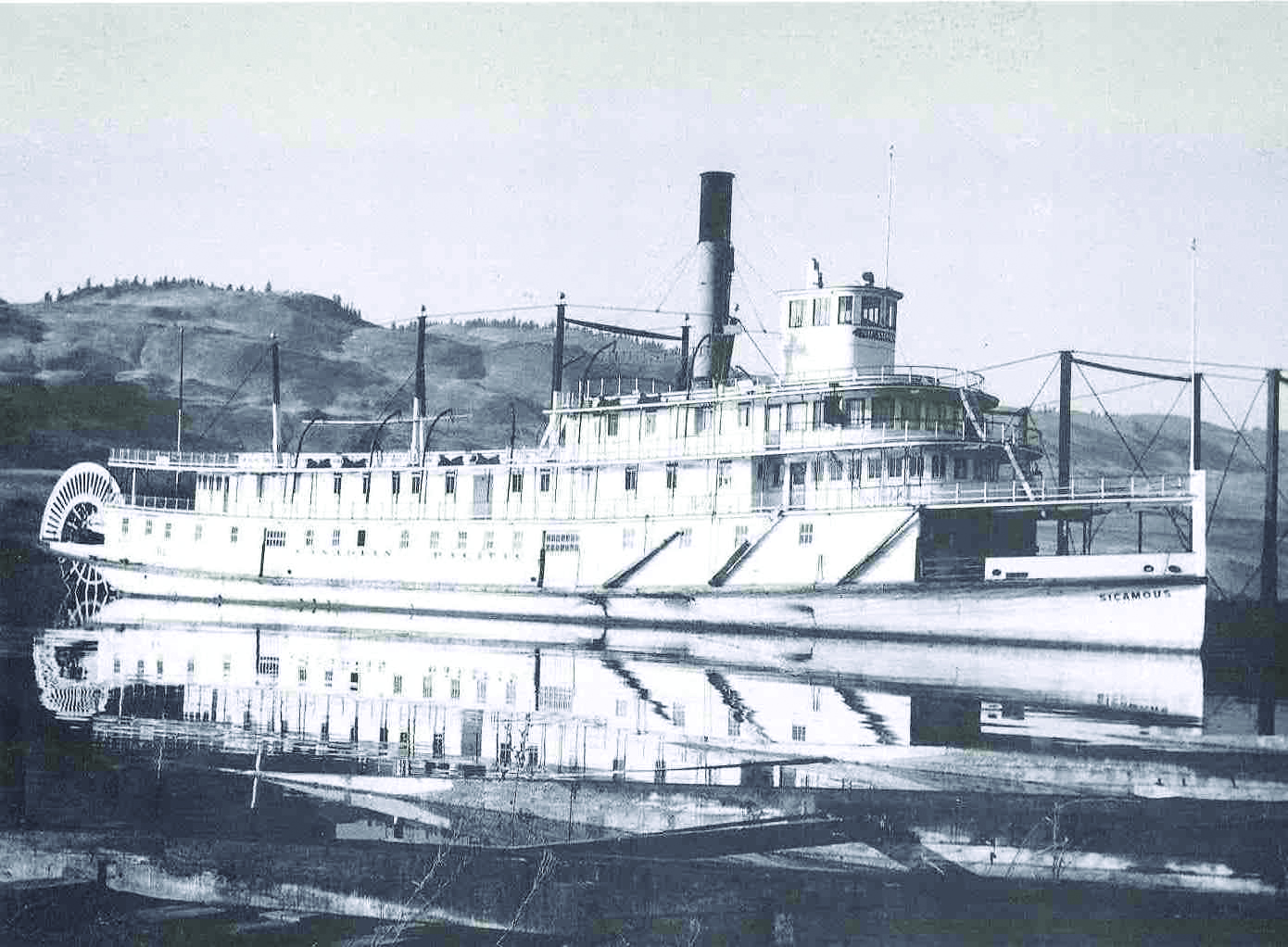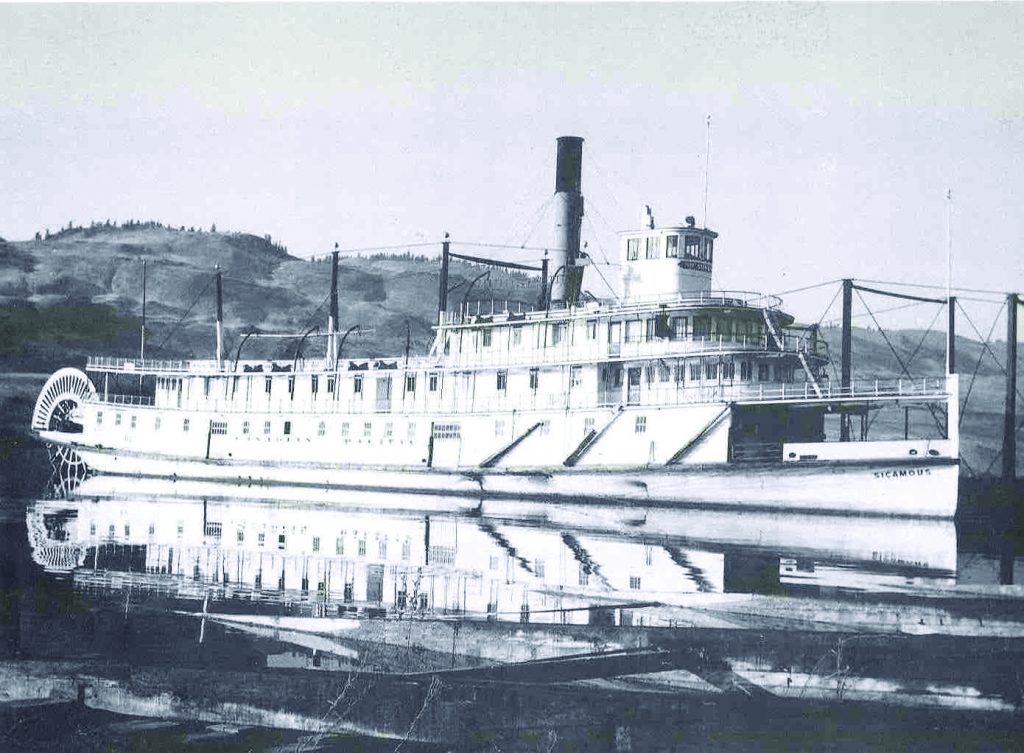
Written for Kelowna Guide Magazine by – Dave Dmytryshyn
Stretching 135 kilometers long and anchored by Vernon to the north, and Penticton to the south, Okanagan Lake is one of the largest natural lakes in British Columbia. Okanagan Lake Ships made it possible to navigate the Okanagan Valley. The lake was formed by a mile-thick of glacial ice retreating some 10,000 years ago. It left behind three large basins that make up the bottom of Okanagan Lake today and account for it’s vast volume and its slow replenishing process—it takes 50 years for the lake to replace itself, a long time compared with other regional lakes that achieve this in as little as two years. The retreating glacier also left behind fertile, mineral rich soil that now accounts for the grounds of the Okanagan’s prosperous agricultural and wine industry.

Okanagan Lake Ships once served as the main means of transportation for Native and European settlers trading and purchasing goods in the string of communities that settled along its shores. During the 1800’s steamboats carried passengers and cargo between Okanagan communities, with the most notable vessels being the S.S. Sicamous, S.S. Aberdeen, and S.S. Okanagan, all owned by the Canadian Pacific Railway (CPR). Although these vessels’ main purpose was cargo transportation, they also provided first-class passenger service, equipped with smoking rooms, ladies’ saloons, and formal dining rooms. The Aberdeen made regular voyages from Okanagan Landing to Penticton, taking a day to travel each way. The fastest vessel was the S.S. Okanagan, with a top speed of 25 km per hour and a capacity of around 200 passengers. Finally, the S.S. Sicamous was a magnificent boat, also known as “The Queen of the Okanagan”, carrying an impressive 500 passengers and 900 tons of cargo. In 1949 Penticton bought the S.S. Sicamous from CPR for one dollar and turned it into a museum, where it can be viewed to this day.
As the steamboats slowly retired from the lake and means of travel began to change, another noteworthy vessel, the Fintry Queen started service. Originally named M.V. Lequime, the Fintry Queen was built in Vancouver in 1948 as a car and passenger ferry that crossed between Kelowna and West Bank, now known as West Kelowna. When the first bridge was completed in 1958 joining the communities there was no longer a need for ferry service. The Fintry Queen was retrofitted into a 325 passenger tour boat and operated for over 50 years.
The legacy of the great boats of the Okanagan lives on today, with a slightly modern twist. The Lake Lounge on Okanagan offers locals and tourists alike an opportunity to enjoy Okanagan Lake from the best seat on the water. The chic tour boat offers weekday public dinner cruises, serving up the best food on the water, great live entertainment and spectacular views. The 90 passenger vessel can also be privately chartered for special occasions and events. With Okanagan Lake’s history of travel and leisure roots, what better way to enjoy the lake than on the Lake Lounge on Okanagan? Call Captain Mike for more details at 778 753 5888 or visit their website at: TheLakeLounge.com
Bibliography: International lake Environment Committee: Okanagan Lake, May 7, 2008, accessed March 21, 2012, Okanagan History Vignette, “Steamboats on Okanagan Lake”, March 21, 2012, accessed March 21, 2012,
Tipping on Wine Tours: Acknowledging Service Excellence
When tipping on a wine tour, consider a range of $5 to $20 per couple as a generally appropriate gesture. This reflects your appreciation for the efforts made by guides and staff. For more details on tipping etiquette, you can learn more here.
